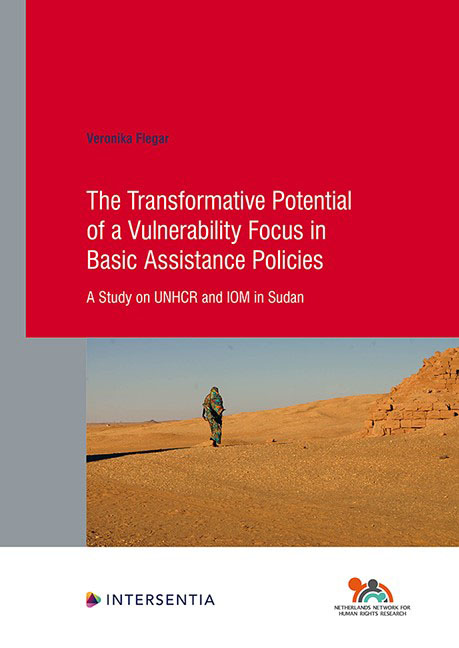 The Transformative Potential of a Vulnerability Focus in Basic Assistance Policies
The Transformative Potential of a Vulnerability Focus in Basic Assistance Policies Published online by Cambridge University Press: 11 November 2021
This short introductory chapter provides background information on IOM in Sudan at the time of research. This seeks to facilitate the reader's understanding of the particularities of the specific case investigated in this study. The chapter outlines IOM's mission in Sudan (10.1), IOM's policy of Migrant Resource and Response Centres (MRRCs) on which this study focuses (10.2) and the policy process underlying the vulnerability assessments’ design and implementation at the MRRC in Khartoum (10.3).
IOM MISSION IN SUDAN
SIZE AND STRUCTURE OF THE MISSION
IOM counted 181 staffmembers in its 2017–2019 Strategic Plan but more detailed information on IOM's staffcomposition in its mission in Sudan was not publically available at the time of research. IOM had one head office in Khartoum (with the MRRC being housed in a separate building in a different part of the city) and six suboffices in South and West Kordofan, North Darfur, South Darfur and West Darfur. The Khartoum office was the main office while all other offices were field offices (and therefore much smaller in size). The present case study focuses exclusively on the main office in Khartoum. The IOM office in Khartoum was subdivided into three major thematic units: the Preparedness and Emergency Unit, the Transition and Reintegration Unit and the Migration Management and Development Unit. The MRRC was part of the last one of these three units.
KEY PRIORITIES AND BUDGET OF IOM IN SUDAN
According to IOM Sudan's Strategic Framework for 2017–2019, the central aim of IOM's activities in Sudan at the time of research was “to support the Government of Sudan and its people to address the challenges and opportunities before, during and after a migration crisis” and “to align its programmatic development and approaches with the principles and objectives of good migration governance”. IOM distinguished three pillars with regard to this overarching objective, namely: 1) the provision of effective humanitarian response, 2) early recovery and transition and 3) the promotion of national ownership preparedness and resilience.
IOM's actual expenditures were not publicly available at the time of this research. However, IOM estimated the budget for these three pillars for the three-year period to be US$ 133.925.000.
To save this book to your Kindle, first ensure [email protected] is added to your Approved Personal Document E-mail List under your Personal Document Settings on the Manage Your Content and Devices page of your Amazon account. Then enter the ‘name’ part of your Kindle email address below. Find out more about saving to your Kindle.
Note you can select to save to either the @free.kindle.com or @kindle.com variations. ‘@free.kindle.com’ emails are free but can only be saved to your device when it is connected to wi-fi. ‘@kindle.com’ emails can be delivered even when you are not connected to wi-fi, but note that service fees apply.
Find out more about the Kindle Personal Document Service.
To save content items to your account, please confirm that you agree to abide by our usage policies. If this is the first time you use this feature, you will be asked to authorise Cambridge Core to connect with your account. Find out more about saving content to Dropbox.
To save content items to your account, please confirm that you agree to abide by our usage policies. If this is the first time you use this feature, you will be asked to authorise Cambridge Core to connect with your account. Find out more about saving content to Google Drive.